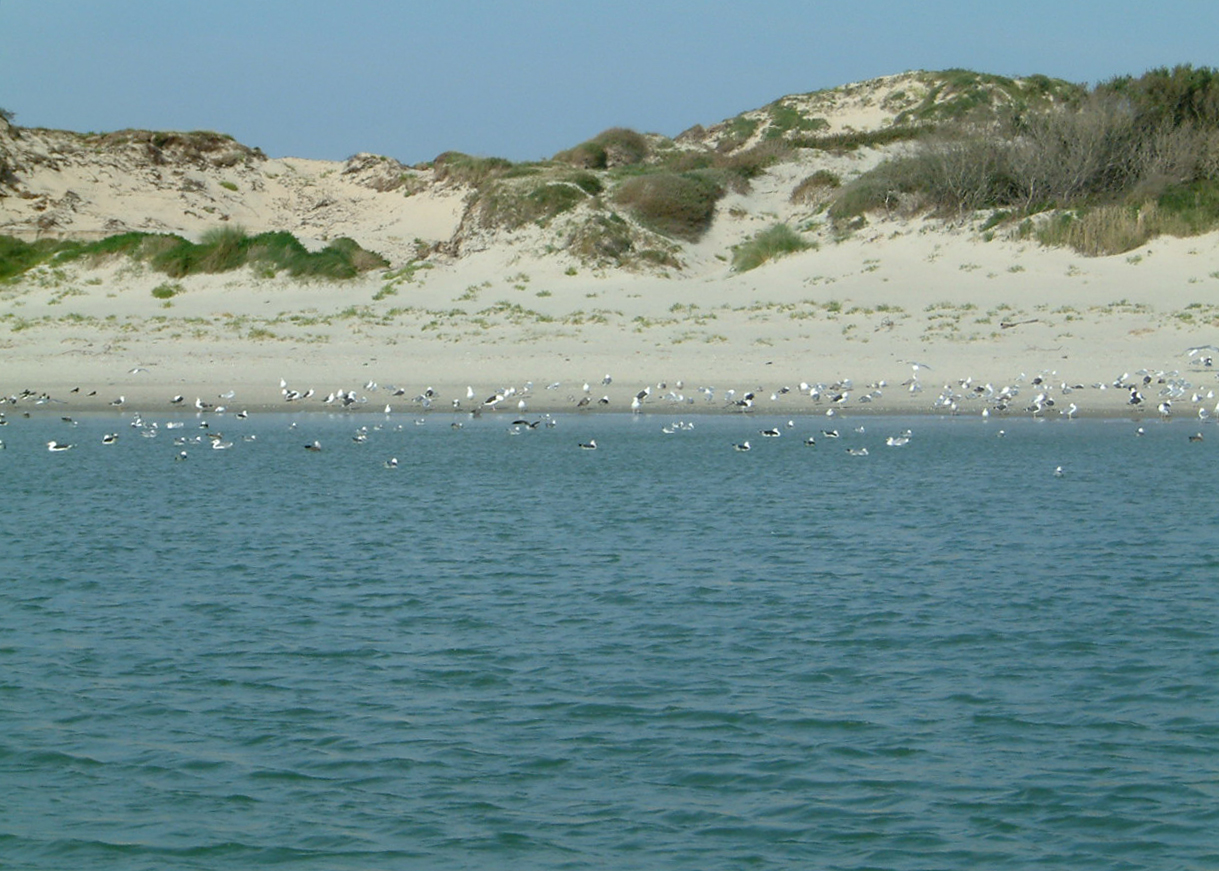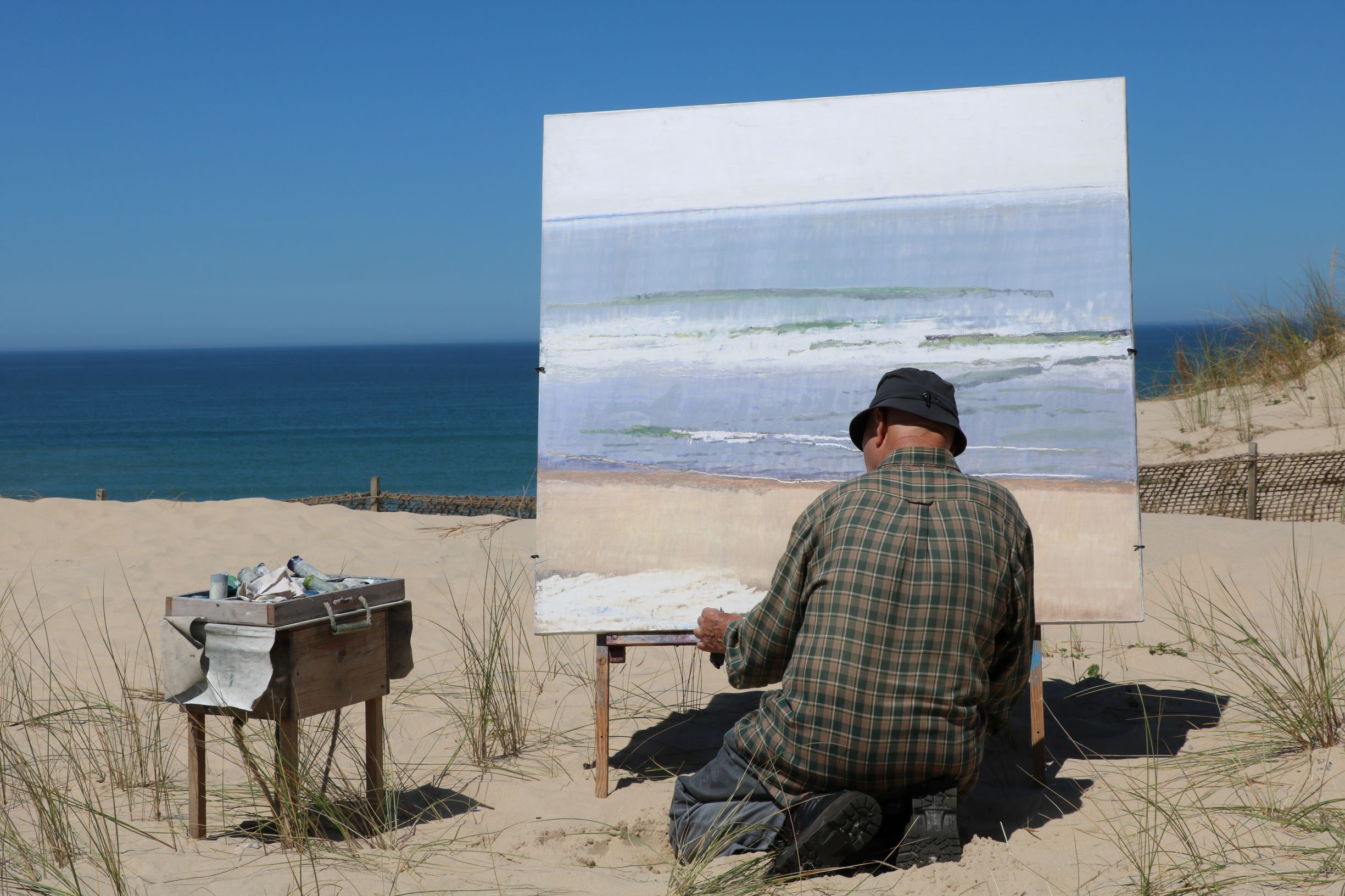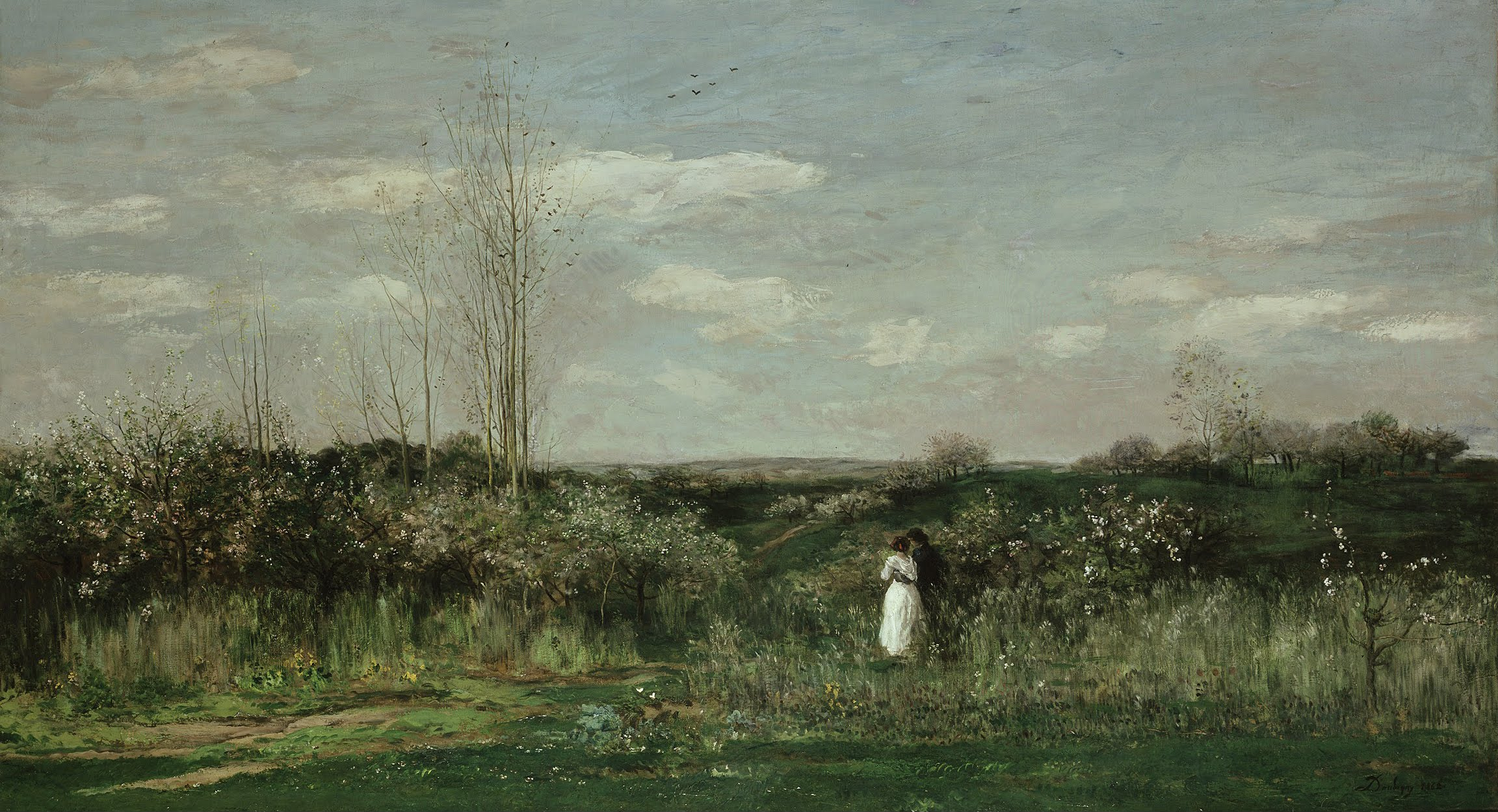|
Eugène Chigot
Eugène Henri Alexandre Chigot (1860 – 1923) was a post impressionist French painter. A pupil of his father, the military painter Alphonse Chigot, in 1881 he entered the internationally renowned École des Beaux-Arts in Paris where he was exposed to the ideas of the realist movement of the Barbizon School and to Impressionism. He settled in Étaples in the Pas-de-Calais in an artists’ colony, later returning to Paris where he became a founder of the Salon d’Automne. An official military painter he painted a series of canvases in Calais and Nieuport recording the destruction caused by the First World War.Antoine Descheemaeker- Colle (2008), ''Sa Vie, son oeuvre peint'', Editions Henri, France. french Chigot's reputation was built on his maritime and landscape paintings that arose from his affinity to Flanders and the Pas-de-Calais. He recorded the lives of the people of Flanders placing them within a landscape of soft opalescent light. Later his paintings show traces ... [...More Info...] [...Related Items...] OR: [Wikipedia] [Google] [Baidu] |
Alphonse Chigot
Alphonse Charles Chigot (1824 – 1917) was a French History painting, historical painter and soldier, particularly associated with the city of Valenciennes where he had a studio for over sixty years. A former soldier in the French army he saw action in the first Franco-Moroccan War of 1844 and served until 1849. In 1853 he entered the Academies de Valenciennes to study art for three years. Chigot favoured military themed subjects and his works include large canvases such as ''le Duel'' and ''Le Salut a la Vierge'', numerous portraits of soldiers and drawings and sketches of the Valenciennoise. He favoured epic subjects which he approached in an academic style, influenced by Neoclassicism and Romanticism. As a long-standing teacher of painting his pupils included his son Eugène Chigot, Charles Paris and Henri Le Sidaner, who painted him in 1881.Antoine Descheemaeker- Colle (2008), Sa Vie, Son Oevre Peint, Editions Henri, France. french Chigot first exhibited in provincial exhi ... [...More Info...] [...Related Items...] OR: [Wikipedia] [Google] [Baidu] |
Paul Vayson
Paul may refer to: *Paul (given name), a given name (includes a list of people with that name) *Paul (surname), a list of people People Christianity * Paul the Apostle (AD c.5–c.64/65), also known as Saul of Tarsus or Saint Paul, early Christian missionary and writer *Pope Paul (other), multiple Popes of the Roman Catholic Church *Saint Paul (other), multiple other people and locations named "Saint Paul" Roman and Byzantine empire *Lucius Aemilius Paullus Macedonicus (c. 229 BC – 160 BC), Roman general *Julius Paulus Prudentissimus (), Roman jurist *Paulus Catena (died 362), Roman notary *Paulus Alexandrinus (4th century), Hellenistic astrologer *Paul of Aegina or Paulus Aegineta (625–690), Greek surgeon Royals * Paul I of Russia (1754–1801), Tsar of Russia *Paul of Greece (1901–1964), King of Greece Other people * Paul the Deacon or Paulus Diaconus (c. 720 – c. 799), Italian Benedictine monk *Paul (father of Maurice), the father of Maurice, By ... [...More Info...] [...Related Items...] OR: [Wikipedia] [Google] [Baidu] |
Berck
Berck (), sometimes referred to as Berck-sur-Mer (, literally ''Berck on Sea''), is a commune in the northern French department of Pas-de-Calais. It lies within the Marquenterre regional park, an ornithological nature reserve. Geography Situated just to the north of the estuary of the river Authie, Berck has a huge expanse of sandy beach and impressive grassy-topped dunes facing north onto the English Channel. The town comprises two parts – to the east, the old fishing town of Berck-Ville and to the west the seaside area, Berck-sur-Mer. Toponymy Berck is attested through the centuries in various forms: ''datum Bergis'' and ''Berc'' in 1215, ''Bierk'' in 1282.Albert Dauzat and Charles Rostaing, 72b. Its origin has been conjectured to come either from Germanic ''berg'' "hill", "mount" or ''birkja'' "place of the birch trees", designating the birch tree wood nearby. The Modern Dutch word for "birch" is ''berk''. In Dutch the name is ''Berk-aan-Zee''. History The old town w ... [...More Info...] [...Related Items...] OR: [Wikipedia] [Google] [Baidu] |
Le Touquet
Le Touquet-Paris-Plage (; pcd, Ech Toutchet-Paris-Plache; vls, 't Oekske, older nl, Het Hoekske), commonly referred to as Le Touquet (), is a commune near Étaples, in the Pas-de-Calais department, northern France. It has a population of 4,227 (2019), but welcomes up to 250,000 people during the summer. Located on the Opal Coast, south of Boulogne-sur-Mer, on the shoreline of the English Channel, the seaside resort has been nicknamed the "Garden of the English Channel" (french: Jardin de la Manche), the "Pearl of the Opal Coast" (french: Perle de la Côte d'Opale), the "Sports Paradise" (french: Paradis des sports) or the "Four Seasons Resort" (french: Station des quatre saisons). The city bears the scars of wounds inflicted during World War II by the construction of the Atlantic Wall, the planting of mines prior to the German withdrawal and intensive Allied bombings. Nevertheless, part of the architectural heritage of Le Touquet was left intact. A number of unique villa ... [...More Info...] [...Related Items...] OR: [Wikipedia] [Google] [Baidu] |
World War I
World War I (28 July 1914 11 November 1918), often abbreviated as WWI, was one of the deadliest global conflicts in history. Belligerents included much of Europe, the Russian Empire, the United States, and the Ottoman Empire, with fighting occurring throughout Europe, the Middle East, Africa, the Pacific, and parts of Asia. An estimated 9 million soldiers were killed in combat, plus another 23 million wounded, while 5 million civilians died as a result of military action, hunger, and disease. Millions more died in genocides within the Ottoman Empire and in the 1918 influenza pandemic, which was exacerbated by the movement of combatants during the war. Prior to 1914, the European great powers were divided between the Triple Entente (comprising France, Russia, and Britain) and the Triple Alliance (containing Germany, Austria-Hungary, and Italy). Tensions in the Balkans came to a head on 28 June 1914, following the assassination of Archduke Franz Ferdin ... [...More Info...] [...Related Items...] OR: [Wikipedia] [Google] [Baidu] |
Eugène Boudin
Eugène Louis Boudin (; 12 July 18248 August 1898) was one of the first French landscape painters to paint outdoors. Boudin was a marine painter, and expert in the rendering of all that goes upon the sea and along its shores. His pastels, summary and economic, garnered the splendid eulogy of Baudelaire; and Corot called him the "King of the skies". Biography Born at Honfleur, Boudin was the son of a harbor pilot, and at age 10 the young boy worked on a steamboat that ran between Le Havre and Honfleur. In 1835 the family moved to Le Havre, where Boudin's father opened a store for stationery and picture frames. Here the young Eugene worked, later opening his own small shop. Boudin's father had thus abandoned seafaring, and his son gave it up too, having no real vocation for it, though he preserved to his last days much of a sailor's character: frankness, accessibility, and open-heartedness. In his shop, in which pictures were framed, Boudin came into contact with artists workin ... [...More Info...] [...Related Items...] OR: [Wikipedia] [Google] [Baidu] |
Deauville
Deauville () is a commune in the Calvados department, Normandy, northwestern France. Major attractions include its harbour, race course, marinas, conference centre, villas, Grand Casino, and sumptuous hotels. The first Deauville Asian Film Festival took place in 1999. Deauville is regarded as the "queen of the Norman beaches" and one of the most prestigious seaside resorts in all of France. As the closest seaside resort to Paris, the city and its region of the '' Côte Fleurie'' (''Flowery Coast'') has long been home to French high society's seaside houses and is often referred to as the ''Parisian riviera''. Since the 19th century, the town of Deauville has been a fashionable holiday resort for the international upper class. Deauville is also a desirable family resort for the wealthy. In France, it is known perhaps above all for its role in Proust's ''In Search of Lost Time''. History overview The history of Deauville can be traced back to 1060, when seigneur Hubert du Mont- ... [...More Info...] [...Related Items...] OR: [Wikipedia] [Google] [Baidu] |
Paris Commune
The Paris Commune (french: Commune de Paris, ) was a revolutionary government that seized power in Paris, the capital of France, from 18 March to 28 May 1871. During the Franco-Prussian War of 1870–71, the French National Guard had defended Paris, and working-class radicalism grew among its soldiers. Following the establishment of the Third Republic in September 1870 (under French chief executive Adolphe Thiers from February 1871) and the complete defeat of the French Army by the Germans by March 1871, soldiers of the National Guard seized control of the city on March 18. They killed two French army generals and refused to accept the authority of the Third Republic, instead attempting to establish an independent government. The Commune governed Paris for two months, establishing policies that tended toward a progressive, anti-religious system of social democracy, including the separation of church and state, self-policing, the remission of rent, the abolition of child l ... [...More Info...] [...Related Items...] OR: [Wikipedia] [Google] [Baidu] |
Paris Salon
The Salon (french: Salon), or rarely Paris Salon (French: ''Salon de Paris'' ), beginning in 1667 was the official art exhibition of the Académie des Beaux-Arts in Paris. Between 1748 and 1890 it was arguably the greatest annual or biennial art event in the Western world. At the 1761 Salon, thirty-three painters, nine sculptors, and eleven engravers contributed. Levey, Michael. (1993) ''Painting and sculpture in France 1700–1789''. New Haven: Yale University Press, p. 3. From 1881 onward, it has been managed by the Société des Artistes Français. Origins In 1667, the royally sanctioned French institution of art patronage, the Académie royale de peinture et de sculpture (a division of the Académie des beaux-arts), held its first semi-public art exhibit at the Salon Carré. The Salon's original focus was the display of the work of recent graduates of the École des Beaux-Arts, which was created by Cardinal Mazarin, chief minister of France, in 1648. Exhibition at the Salo ... [...More Info...] [...Related Items...] OR: [Wikipedia] [Google] [Baidu] |
Pierre-Henri De Valenciennes
Pierre-Henri de Valenciennes (December 6, 1750 – February 16, 1819) was a French painter who was influential in elevating the status of ''En plein air'' (open-air painting). Life & work Valenciennes worked in Rome from 1778 to 1782, where he made a number of landscape studies directly from nature, sometimes painting the same set of trees or house at different times of day. He theorized on this idea in his 1800 treatise ''Reflections and Advice to a Student on Painting, Particularly on Landscape'', developing a concept of a "landscape portrait" in which the artist paints a landscape directly while looking upon it, taking care to capture its particular details. Painting outside allowed Valenciennes to capture the fleeting changes of a landscape due to light and weather. He was a proponent of artists working outside and painting the same view at multiple times of day. Although he spoke of this as a type of painting mainly of interest to "amateurs", as distinguished from the higher ... [...More Info...] [...Related Items...] OR: [Wikipedia] [Google] [Baidu] |
En Plein Air
''En plein air'' (; French for 'outdoors'), or ''plein air'' painting, is the act of painting outdoors. This method contrasts with studio painting or academic rules that might create a predetermined look. The theory of 'En plein air' painting is credited to Pierre-Henri de Valenciennes (1750–1819), first expounded in a treatise entitled ''Reflections and Advice to a Student on Painting, Particularly on Landscape'' (1800), where he developed the concept of landscape portraiture by which the artist paints directly onto canvas ''in situ'' within the landscape. It enabled the artist to better capture the changing details of weather and light. The invention of portable canvases and easels allowed the practice to develop, particularly in France, and in the early 1830s the Barbizon school of painting in natural light was highly influential. Amongst the most prominent features of this school were its tonal qualities, colour, loose brushwork, and softness of form. These were varian ... [...More Info...] [...Related Items...] OR: [Wikipedia] [Google] [Baidu] |
Charles-François Daubigny
Charles-François Daubigny ( , , ; 15 February 181719 February 1878) was a French painter, one of the members of the Barbizon school, and is considered an important precursor of impressionism. He was also a prolific printmaker, mostly in etching but also as one of the main artists to use the cliché verre technique. Biography Daubigny was born in Paris, into a family of painters; taught the art by his father, , and his uncle, miniaturist Pierre Daubigny (1793-1858). He was also a pupil of Jean-Victor Bertin, Jacques Raymond Brascassat and Paul Delaroche, from whom he would quickly emancipate himself. In 1838, he set up, at the Rue des Amandiers-Popincourt, a community of artists, a phalanstery, with Adolphe-Victor Geoffroy-Dechaume, Hippolyte Lavoignat, Ernest Meissonnier, Auguste Steinheil, Louis Joseph Trimolet, with whom he already had expressed his interest in subjects drawn directly from daily life and nature. These artists will work, among others, for the publisher Léon ... [...More Info...] [...Related Items...] OR: [Wikipedia] [Google] [Baidu] |

%2C_armée_de_l'est_(1888)%2C_oil_painting%2C_Musée_d'Orsay.jpg)





